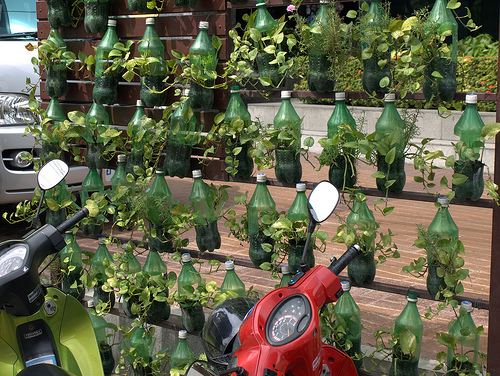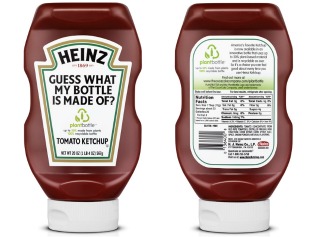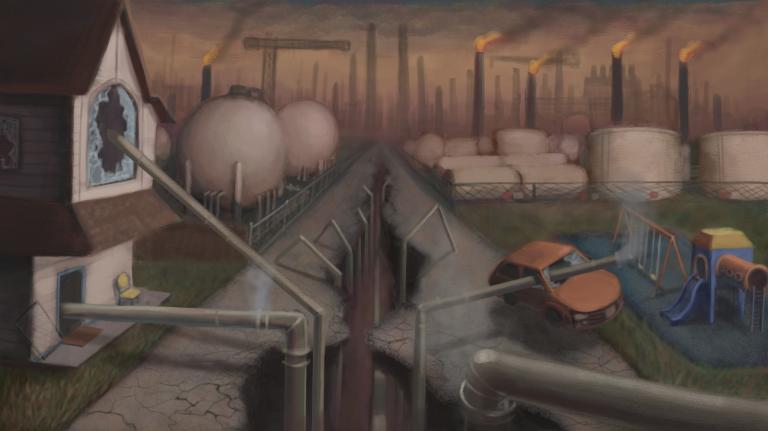Send your question to Umbra!
Q. Dear Umbra,
Recently I was in an airport and saw drinks in bottles touting “plastic made from plants.” What’s up with that? Most plastic is made from oil, and that technically came from plants, once upon a time … are these new bottles just a bubbly reframing of business as usual?
Scott R.
Seattle, WA
 If only it were this simple. Photo: Peter RowleyA. Dearest Scott,
If only it were this simple. Photo: Peter RowleyA. Dearest Scott,
I have chosen to answer your question for two important reasons: 1) It represents one of modern life’s many eco-conundra, and we should all be armed to respond in such situations; 2) You are the new Grist overlord, and according to article 24, section B, clause 572 of my contract, I am obligated to do so cheerily and promptly.
Plastic made from plants sounds vaguely pleasant and sustainable, doesn’t it? Unfortunately, while this material might hold some long-term promise, it’s currently more like you in an airport. Which is to say, it has some baggage.
First, a bit of background: The material known broadly as “bioplastic” has actually been around for some time, with commercial explorations beginning in the 1950s. It can be made from corn, cellulose, tapioca, potato bits and orange peels, cashew shells … the astonishing list goes on. Bioplastics are most often used to make disposable items like bottles, utensils, and food containers, but can also appear in more durable goods such as cell phones and car parts (in fact, Henry Ford was somewhat of a bioplastics pioneer).
These days, there’s a bit of eco-hoopla around these materials, which stems from two alleged benefits: Their production is said to generate far fewer greenhouse gases than that of traditional, oil-based plastics (though a study from the University of Pittsburgh pokes holes in that). And the plastics are recyclable or compostable (at the high heat of commercial facilities). However, there are currently complications with this too, including fears of bioplastics contaminating conventional-plastic recycling streams, skittish composters plucking out the plastic, and consumer confusion — see this overview if you dare. Exhausting, and we haven’t even gotten into the food vs. fuel vs. plastic debate.
 Photo: HeinzDespite these issues, you’ll be seeing a lot more vege-plastics. At the moment, according to our friends at the Bioplastics Council, they comprise about 1 percent of the global plastics industry, but the market is expected to grow 40 percent by 2015. Part of this surge is due to the fact that corporations such as Pepsi, Coca-Cola, Samsung, Heinz, Cargill, and DuPont are getting into the game. Bioplastics even have their own symbol.
Photo: HeinzDespite these issues, you’ll be seeing a lot more vege-plastics. At the moment, according to our friends at the Bioplastics Council, they comprise about 1 percent of the global plastics industry, but the market is expected to grow 40 percent by 2015. Part of this surge is due to the fact that corporations such as Pepsi, Coca-Cola, Samsung, Heinz, Cargill, and DuPont are getting into the game. Bioplastics even have their own symbol.
My take is this: Hooray for innovation! Give us a call when you’ve worked out the kinks.
The larger point, of course, is that we should avoid buying plastic whenever possible. Even in an airport situation, Scott, you could pack an empty reusable bottle, pass through security, then fill it at a water fountain or restaurant. Of course, you should also limit your flying to reduce your carbon impacts … frankly, we should probably all just start sitting at home all day, sucking the inside of our cheeks for hydration.
Epithelially,
Umbra




